Popular spices in Morocco : Exploring the Spice Markets of Morocco
- tasteafroindia
- Dec 6, 2023
- 3 min read
Updated: Dec 8, 2023
Ras El Hanout
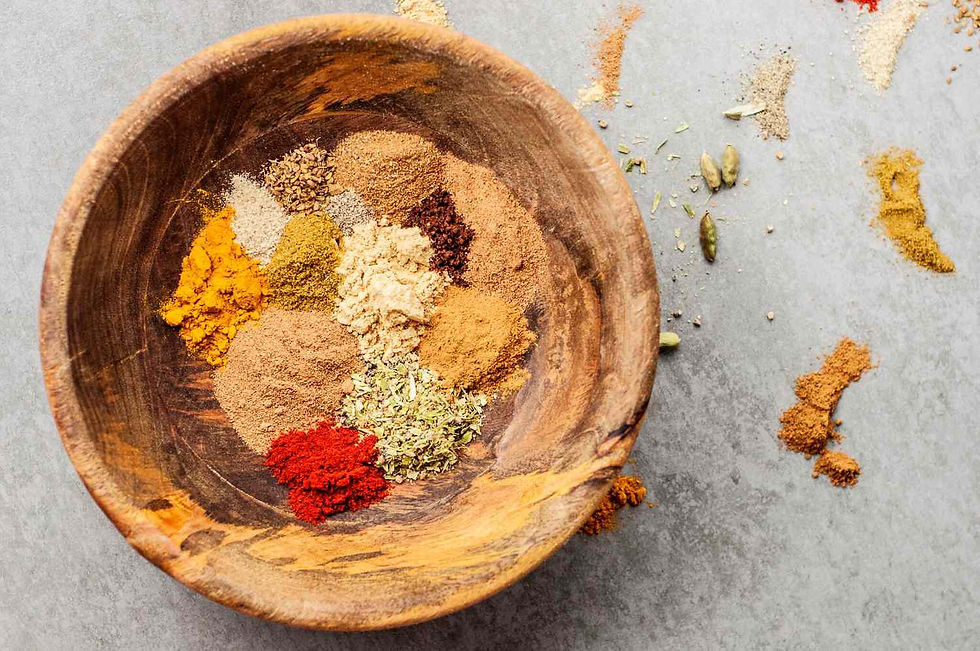
Translated as ‘head of the shop’ is a harmonious fusion of up to thirty various spices, including chili peppers, paprika, ginger, turmeric, coriander, dried ginger, peppercorn, clove, nutmeg, aniseed, cardamom and cumin. For many Moroccan cuisine, its warm and rich flavor. Whole spices are combined and crushed together.
The taste may vary slightly depending on whatever stall you purchase from. All of them are warming rather than too spicy, and they tend to have a distinctive bright red color (from the paprika).
The spice mixture is mostly used to soups and stews, but it is primarily used as a rub for meats or in marinades. Cooking with it and smelling those strong spices will take you back to the narrow alleys of the souks.
Saffron (Zafrane)
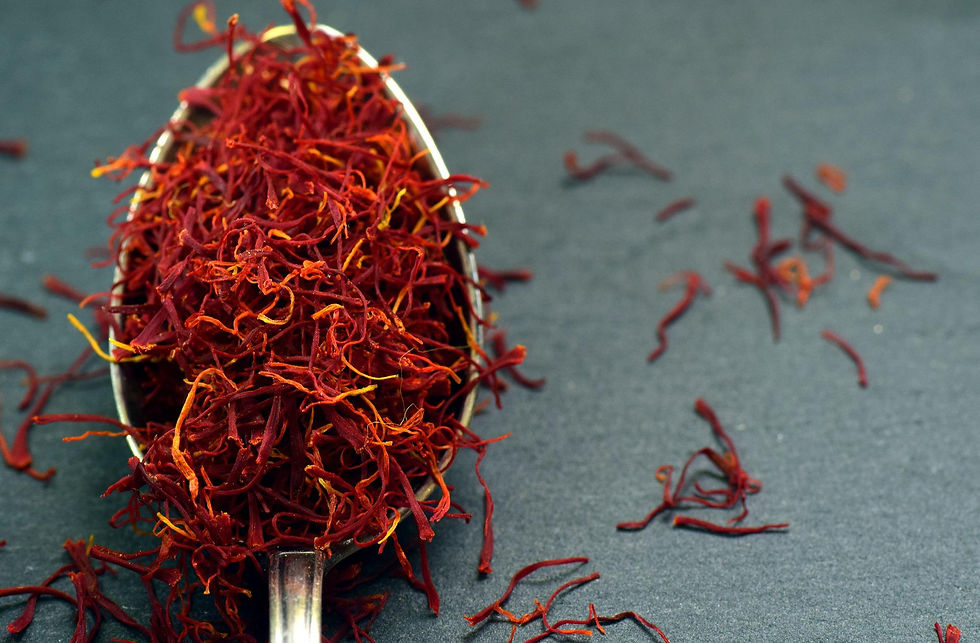
Saffron (Zafrane) is a highly valued culinary spice that also functions as a natural medicine. It is grown in the Siroua mountains of southern Morocco from the stamens of the crocus plant. It is worth more per gram than gold!
In addition to being used in desserts, milk puddings, and teas, it is frequently used in tajines to give meat and veggies a good color and flavor. Many people think it has therapeutic qualities, and it's specifically used to ease menstrual cramps, toothaches, and spasms. While we are unable to verify such health benefits, we can state with certainty that this spice gives many Moroccan recipes a wonderful flavor.
While saffron is expensive worldwide, it is considerably less expensive in Morocco. And as with other countries, be aware that the tourist stores sell four different kinds of fake saffron.
Chilli (Harissa)
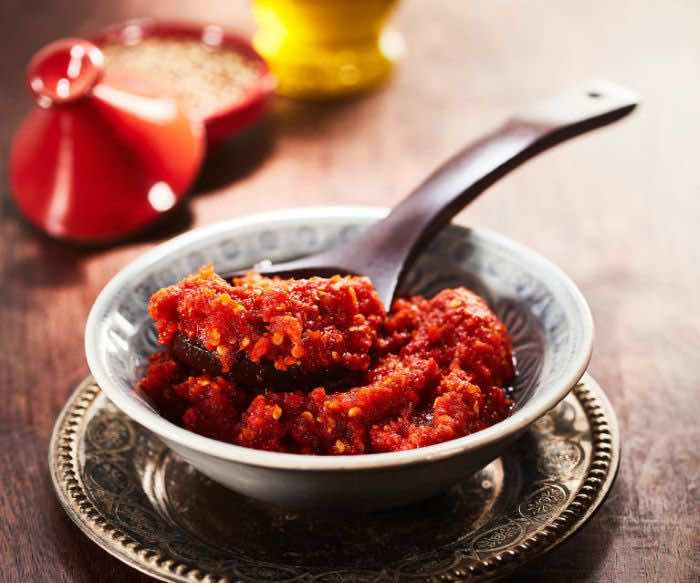
Harissa or Chilli is a hot chili paste made with cumin, coriander, garlic, and roasted red chili peppers. It is an essential component of Moroccan cooking, giving tagines, stews, and couscous meals a fiery twist.
Chilies are widely used around the world in the forms of pastes, liquids, or powders. In Morocco, they are most frequently used after being mixed with other spices and oil.
Cumin (Kamoun)
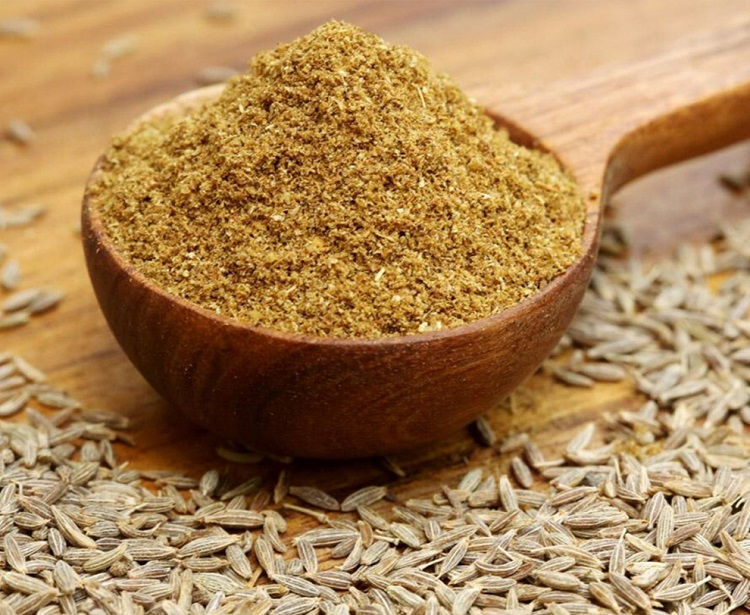
A staple in Moroccan cusine, cumin gives a warm, earthy taste to a variety of meals. The foundation of many Moroccan recipes is cumin, which goes well with couscous, tagines, and grilled meats. Its unique flavor melds well with other spices creating a depth of flavor that is comforting.
Ginger (Skinjbir)

Ginger, one of the most commonly used spices in Moroccan cooking, adds a spicy, aromatic touch to a variety of Moroccan tagines and couscous meals. Moroccans are more likely to use powdered ginger than raw ginger, despite the fact that many other countries use it that way.
Prior to the Arab’s arrival, the popularity of ginger in Moroccan cuisine can be dated back to the sixth century. Ginger is therefore one of the most ancient spices in Moroccan cooking.
Cinnamon (Karfa)

A sweet, fragrant spice, cinnamon gives Moroccan cuisine a hint of richness and warmth. It gives tagines and sweet pastries a flavor that is reassuring and appealing.
Found in many sweet and savory Moroccan dishes, cinnamon holds a little bit of heat but is far milder than Moroccan chilli or black pepper.
Black pepper (ibzar)
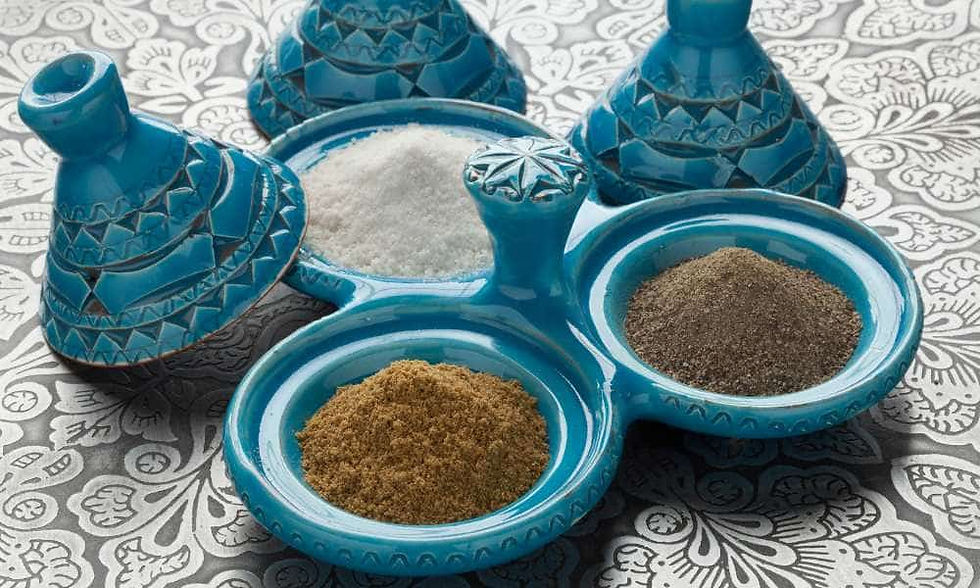
Black pepper, which is originally from Southern India, has become a pantry staple.
Black pepper has become an essential ingredient in Moroccan cuisine it adds a spiciness that goes well with lamb kebabs, fish chermoula, and traditional Moroccan tagines.
Fenugreek seeds (Helba / Halba)

The fenugreek seeds, also known as Helba or Halba in Moroccan cuisine is a perfect complement to many Moroccan dishes, including the traditional Moroccan rfissa.
Fenugreek seed is bitter raw, but when cooked it releases a sweet, nutty, and burnt sugar scent. It is best eaten warm.
The fenugreek plant is known for its health-promoting qualities. Rumored to raise testosterone, reduce blood pressure, and enhance milk production in nursing moms.


